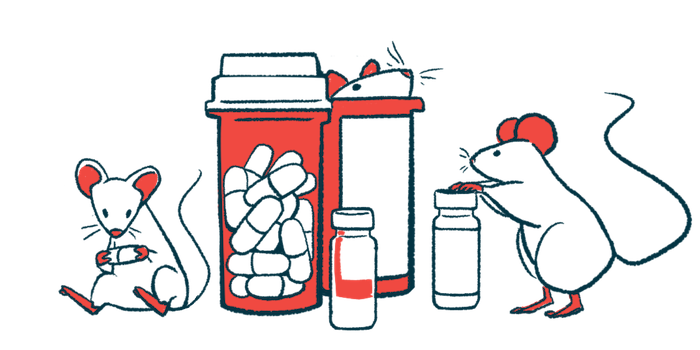Sotatercept Could Be Effective PAH Treatment, Rodent Models Suggest

Treatment with an analog of sotatercept, Acceleron Pharma’s experimental therapy, eased disease-associated inflammation and changes in blood vessel architecture in multiple rodent models of pulmonary arterial hypertension (PAH), a study reported.
The study, “Sotatercept analog suppresses inflammation to reverse experimental pulmonary arterial hypertension,” was published in the journal Scientific Reports.
Sotatercept is designed to sequester certain molecules in order to normalize PAH-associated changes that result from activating the SMAD2/3 signaling pathway. The investigational therapy has shown promise in a Phase 2 PAH clinical trial (NCT03496207), and is being further tested in several ongoing studies.
A team led by scientists at Acceleron conducted a series of tests aiming to better understand the biological effects of sotatercept.
The scientists first used a rat model of PAH induced by the drug Sugen and low oxygen levels, referred to as SuHxNx. After confirming that these rats developed PAH-like disease as intended, the team conducted gene expression (activity) analyses of the rats’ lung tissue.
Researchers identified 248 genes that were upregulated in SuHxNx rat lungs, as well as 97 genes that were downregulated compared to healthy tissue. Analyses suggested that many of these genes were involved in processes known to affect PAH development and progression, including inflammation and the growth of cells in blood vessels. Results were also similar to findings in patients, based on data from a publicly available database.
“Overall, the pathways and upstream regulators implicated by this analysis in SuHxNx pulmonary pathology [disease] depict a phenotype [observable traits] of highly activated inflammation and proliferation,” the researchers wrote. The results also indicate “concordance in dysregulated gene expression between the SuHxNx rat model and PAH patient lung tissues and provide corroborating evidence that the SuHxNx rat used here is a robust model of human PAH.”
Treatment with RAP-011, a sotatercept analog or substantially similar drug, normalized the expression of 207 out of 248 (84%) upregulated genes and 69 out of 97 (71%) downregulated genes. By contrast, treatment with the approved PAH therapy sildenafil — sold as Revatio — only normalized the expression of about 8% of the total genes.
“Genes differentially expressed as a result of RAP-011 treatment prominently included those in pathways associated with inflammatory and aberrant immune responses … These results provide a pulmonary gene expression signature corresponding to the potent therapeutic anti-remodeling effects of RAP-011 in this model of severe PAH,” the scientists wrote.
“Currently approved PAH therapies improve symptoms and functional capacity, but they do not directly target vascular or RV [right ventricle] remodeling,” their study noted.
Tissue analyses of the SuHxNx rats indicated increased levels of inflammatory macrophages (a type of immune cell) in the rats’ airways. Treatment with RAP-011 fully normalized these macrophage numbers in the rats’ lungs, whereas sildenafil had no effect on their levels.
Analyses of the rats’ hearts also generally showed a greater reversal of PAH-related changes with RAP-011’s use than in animals given sildenafil.
Further experiments testing both RAP-011 and sildenafil simultaneously generally had a greater beneficial effect than sildenafil alone. The combination also showed greater effectiveness than RAP-011 alone in some cardiac measures, though the difference was mostly driven by RAP-011.
“These results demonstrate greater effectiveness of [RAP-011] monotherapy compared to sildenafil monotherapy, as well as [RAP-011] effectiveness as an add-on therapy in this rat model of severe angio-obliterative PAH, consistent with the efficacy observed in PAH patients receiving background therapies,” the scientists wrote.
Findings, they added, “further solidify the view that [RAP-011] operates through mechanisms largely distinct from those of current PAH therapies.”
The researchers then conducted a battery of similar analyses in mice with mutations in the Bmpr2 gene, a model of heritable PAH. Results were generally comparable to findings from the SuHxNx rats, indicating that RAP-011 treatment lowered inflammatory macrophage numbers and reversed disease-associated changes in heart structure.
“Together, these results indicate that a mouse model of heritable PAH, like the SuHxNx rat model of induced PAH described above, is characterized by marked inflammatory infiltrates, and that treatment with [RAP-011] in either case is associated with suppressed macrophage infiltration and restored cardiopulmonary structure and function,” the scientists concluded.
“Our results demonstrate that inflammatory gene signatures and macrophage perivascular [around blood vessels] infiltrates in severe experimental PAH were normalized by therapeutic treatment with [RAP-011], and the concordance we observed between aberrant gene profiles in this rodent model and in PAH patients strongly supports the translatability of these findings to human PAH,” they added.








